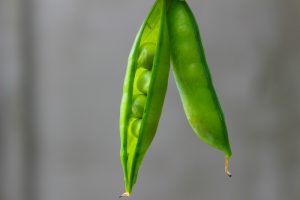Enter your address to receive notifications about new posts to your email.
Articles tagged Fundamental Research
(130 results)
-
Hyper-conserved sperm proteins can still evolve rapidly
The fastest-evolving genes in eukaryotes commonly encode reproductive proteins—and the rate at which genes for male reproductive proteins change, in particular, often vastly outstrips the rate of change across the genome as a whole. A recent paper in G3: Genes|Genomes|Genetics describes an unusual exception: the amino acid sequences of the most abundant sperm proteins in…
-
Genetics Society of America honors Job Dekker with 2018 Edward Novitski Prize
The Genetics Society of America (GSA) is pleased to announce that Job Dekker of the University of Massachusetts Medical School is the recipient of the 2018 Edward Novitski Prize. The award honors investigators who have exhibited “an extraordinary level of creativity and intellectual ingenuity in the solution of significant problems in genetics research.” Dekker, a…
-
Battle-scarred flies help us understand the genetics of aggression
Whether it’s a battle over territory or a brawl over a sports game, aggressive behavior is a hallmark of the animal kingdom. The influence genetics has on aggression is undeniable—but the process of determining the genes involved has been frustratingly slow. To better understand genetic factors involved in aggression, some researchers have turned to male…
-
Genetics Society of America honors Barbara Meyer with 2018 Thomas Hunt Morgan Medal
The Genetics Society of America (GSA) is pleased to announce that Barbara Meyer is the recipient of the 2018 Thomas Hunt Morgan Medal, which is awarded for lifetime achievement in genetics. This honor is given in recognition of her groundbreaking work on chromosome behaviors that govern gene expression, development, and heredity. Meyer’s studies of how…
-
Mariana Wolfner recognized with 2018 Genetics Society of America Medal
The Genetics Society of America (GSA) is pleased to announce that Professor Mariana Wolfner of the Department of Molecular Biology and Genetics at Cornell University is the recipient of the 2018 Genetics Society of America Medal for her work on reproduction. Wolfner and her colleagues have identified proteins in the seminal fluid of fruit flies…
-
A fly that thrives on a deadly diet
When a noni fruit ripens, it stinks like old cheese—or even vomit. Familiar to many in the form of expensive juices sold as health supplements, this pungent fruit is engaged in a slow-motion arms race with would-be insect pests. Fruit flies are unable to feast on noni—scientific name Morinda citrifolia—because the fruit is dosed with…
-
Beyond BRCA: new players in breast cancer pathways discovered
Mutations that disrupt the gene BRCA2 dramatically increase the odds of developing breast and ovarian cancer—but such mutations aren’t enough to cause cancer on their own. To turn normal cells cancerous, some of BRCA2’s genetic interactors must also mutate. In an article recently published in GENETICS, Ding et al. sought to identify some of these genes.…
-
Zebrafish offer hope for understanding severe form of epilepsy
The prolonged and severe seizures suffered by those with pyridoxine-dependent epilepsy (PDE) can lead to brain dysfunction and death if not treated. Standard antiepileptic drugs are typically ineffective for people with this rare genetic disorder—instead, they need high doses of vitamin B6 in the form of pyridoxine or pyridoxal 5′-phosphate. But even with this supplementation,…
-
Sperm and eggs don’t always join at random
Choosing a mate is hardly random. During courtship in the diploid phase of our life cycle, we often employ elaborate rituals and biological signals to attract and assess potential mates. But after that, we usually assume that eggs and sperm choose each other randomly at fertilization. Or so says Mendel’s First Law. But sometimes, Joseph…
-
Benign yeast turn into filamentous pathogens in different ways
The yeast Candida albicans lives on and even inside many of us. Most of the time, its silent presence goes unnoticed, but this fungus can turn on its host, causing infections ranging in severity from annoying to life-threatening. For the yeast to become pathogenic, some of the C. albicans must transform from small, round cells…
-
Stressed-out worms hit the snooze button
When you catch a nasty cold, curling up in bed to sleep may be the only activity you can manage. Sleeping in response to stress isn’t a uniquely human behavior: many other animals have the same reaction, and it’s not clear why. While the circadian sleep that follows the pattern of the clock has been…






![Image by Michael Hermann (Own work) [CC BY-SA 3.0], via Wikimedia Commons.](https://s36063.pcdn.co/wp-content/uploads/2018/01/Webp.net-resizeimage-19-300x225.jpg)
![Image by unknown photographer [Public domain], via Wikimedia Commons.](https://s36063.pcdn.co/wp-content/uploads/2018/01/Webp.net-resizeimage-17-300x221.jpg)



